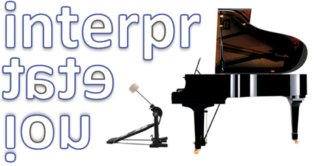To make an interpretation the musician must read the score, but the musician also writes in the score. The notes of the musician are often about topics such as tempo, dynamics, phrasing, and articulation, either in the form of changes or additions to the original node. This shows us an overlap between the composer and the musician; that interpretation is partly a matter of notation.
Whether the musician writes down his dynamic changes or not may seem indifferent – as a question of memory. But the write-down enables an interpretation which, for example, is more complicated than the memory allows (like here), or which depends on an alternative notation invented by the musician himself. Like in the following score sample, in which the added notation is information about the temporal relationship (synchronization) between the pianist’s right and left hand. The markings are inspired by a recording of the work (Chopin op. 28, 4) with Cortot, and is intended as an auxiliary tool in order to imitate Cortot (inspired by Chasing the butterfly).

In a similar experiment, a performed interpretation is written down in traditional notation (this time it is Debussy’s Girl with…). The experiment exemplifies how extensive the differences are between the performance and the musical score. And therefore, a performance of this new version of the score would hardly come close to a music notation software’s playback function.
to the left: the original score ··· to the right: the interpretation by Søren Rastogi written down in “traditional” notation

